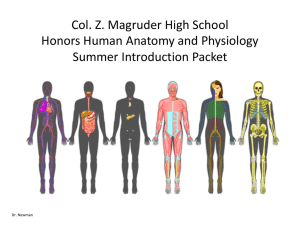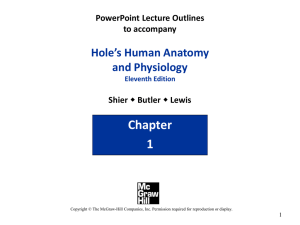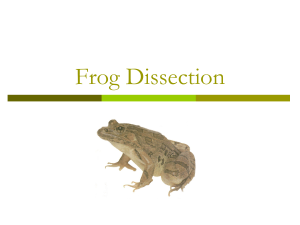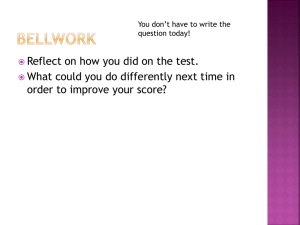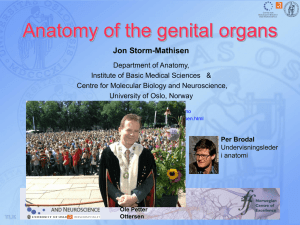Southwestern Illinois EMS System
advertisement
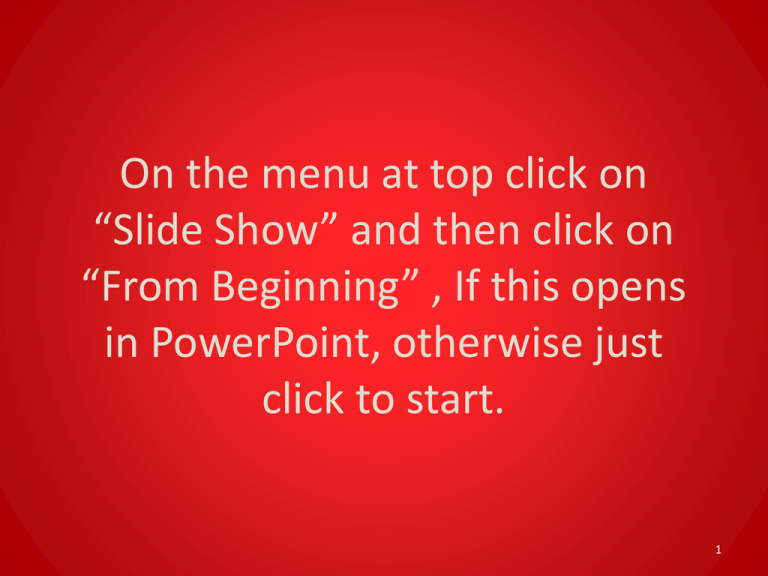
On the menu at top click on “Slide Show” and then click on “From Beginning” , If this opens in PowerPoint, otherwise just click to start. 1 Southwestern Illinois EMS System Introduction to Cardiac Anatomy and Physiology 2 Introduction • Cardiovascular disorder – Diseases, conditions that involve heart, blood vessels • Heart disease – Conditions affecting heart 3 Introduction • Coronary heart disease – Coronary arteries, resulting complications • Angina pectoris, acute MI • Coronary artery disease – Affects arteries that supply heart muscle with blood 4 Risk Factors & Prevention Strategies • Risk factors – Nonmodifiable (fixed) risk factors – Modifiable risk factors • • • • High blood pressure Elevated serum cholesterol levels Tobacco use Diabetes 5 Risk Factors & Prevention Strategies • Risk factors – Modifiable risk factors • Physical inactivity • Obesity, body fat distribution • Metabolic syndrome 6 Risk Factors & Prevention Strategies • Risk factors – Contributing risk factors • • • • Stress Inflammatory markers Psychosocial factors Alcohol intake 7 Cardiovascular Anatomy & Physiology 8 Anatomy Review • Blood vessels – Arteries – Arterioles – Capillaries – Venules – Veins 9 Anatomy Review • Heart anatomy – Location • • • • Mediastinum Behind sternum, above diaphragm Base Apex 10 Anatomy Review Heart Location 11 Anatomy Review • Heart anatomy – Heart chambers • Upper chambers – Right, left atria • Lower chambers – Right, left ventricles 12 Anatomy Review • Heart anatomy – Septum – Pulmonary circulation – Systemic circulation – Blood carried from heart to body through arteries, arterioles, capillaries – Blood returned to heart through venules, veins 13 Anatomy Review Heart anatomy • Heart layers • • • • Endocardium Myocardium Epicardium Pericardium 14 Anatomy Review • Heart anatomy – Heart valves • AV valves – – – – – Separate atria from ventricles Tricuspid valve, between right atrium, right ventricle Mitral/bicuspid valve lies between left atrium, left ventricle Open when forward pressure forces blood forward Close when backward pressure pushes blood backward 15 Anatomy Review • Heart anatomy – Atrial kick • Blood flows continuously into atria • 70% flows directly through, into ventricles before atria contract • When atria contract, additional 30% added to filling of ventricles • When ventricles contract (systole), pressure rises • Tricuspid, mitral valves close when pressure within ventricles exceeds that of atria 16 Anatomy Review • Heart anatomy – Semilunar (SL) valves • Pulmonic, aortic valves • Prevent backflow of blood from aorta, pulmonary arteries into ventricles • Close as ventricular contraction ends, pressure in pulmonary artery, aorta exceeds that of ventricles • Chordae tendinae, connective tissue, attached to AV valves underside & papillary muscles 17 Anatomy Review • Blood flow through heart – Enters right atrium via superior, inferior venae cavae, coronary sinus – Right atrium through tricuspid valve into right ventricle – Right ventricle expels blood through pulmonic valve into pulmonary trunk – Flows through pulmonary arteries to lungs 18 Anatomy Review • Blood flow through heart – Low in O2, passes through pulmonary capillaries – From left atrium through mitral valve into left ventricle – Distributed throughout body through aorta, its branches 19 Anatomy Review • Blood flow through heart – Tissues of head, neck, upper extremities via superior vena cava – Lower body via inferior vena cava – Superior, inferior vena cava carry contents into right atrium 20 Anatomy Review • Cardiac cycle – Repetitive pumping process, events associated with blood flow through heart – Systole – Diastole 21 Anatomy Review • Cardiac cycle – Depends on cardiac muscle ability to contract, condition of heart’s conduction system – Pressure with each chamber rises in systole, falls in diastole – Conduction system provides timing of events between atrial, ventricular systole 22 Anatomy Review • Coronary arteries – Right, left – Main arteries – Left anterior descending (LAD), left circumflex (LCX), right coronary artery (RCA) – Lie on outer surface of heart 23 Anatomy Review Coronary Arteries 24 Anatomy Review • Coronary veins – Travel alongside arteries – Coronary sinus, largest vein, drains heart 25 Anatomy Review • Heart rate – Affected by sympathetic, parasympathetic ANS – Chronotropic effect – Inotropic effect – Dromotropic effect 26 Anatomy Review • Heart rate – Baroreceptors • • • • Specialized nerve tissue (sensors) Found in internal carotid arteries, aortic arch Detect changes in blood pressure When stimulated cause sympathetic/parasympathetic response • Will “reset” to new “normal” after few days of exposure to specific pressure 27 Anatomy Review • Heart rate – Chemoreceptors • In internal carotid arteries, aortic arch, medulla detect changes in concentration of hydrogen ions (pH), O2, carbon dioxide in blood 28 Anatomy Review • Heart rate – Parasympathetic stimulation • Parasympathetic fibers supply sinoatrial node, atrial muscle, & AV junction of heart by vagus nerves 29 Anatomy Review • Heart rate – Sympathetic stimulation • Sympathetic nerves supply specific areas of heart’s electrical system, atrial muscle, ventricular myocardium • When stimulated, norepinephrine released • Increases in heart rate shorten all phases of cardiac cycle 30 Anatomy Review • Heart rate – Increases in heart rate shorten all phases of cardiac cycle – Electrolyte, hormone levels, medications, stress, anxiety, fear, body temperature can influence heart rate – Heart rate increases when body temperature increases, decreases when body temperature decreases 31 Heart as Pump • Venous return – Most important factor determining amount of blood pumped out by heart is amount of blood flowing into right heart 32 Heart as Pump • Cardiac output – Amount of blood pumped into the aorta each minute by heart – Defined as stroke volume x heart rate – Stroke volume determined by • Preload • Afterload 33 Heart as Pump • Cardiac output – Frank–Starling’s law • Greater the volume of blood in heart during diastole (preload), the more forceful cardiac contraction & more blood ventricle will pump (stroke volume) • Important that heart adjust its pumping capacity in response to changes in venous return • During exercise, heart muscle fibers stretch in response to increased volume (preload) before contracting 34 Heart as Pump • Cardiac output – Frank–Starling’s law • Factors that increase cardiac output include increased body metabolism, exercise, age & size of body • Factors that may decrease cardiac output include shock, hypovolemia, heart failure 35 Conclusion Please complete the 10 question online exam and submit when completed. Thank You 36


